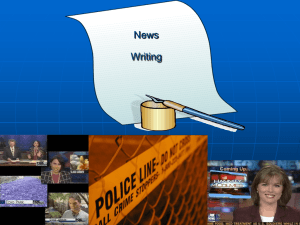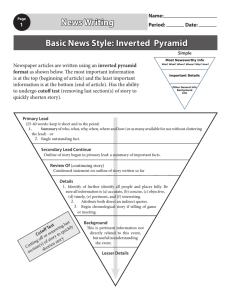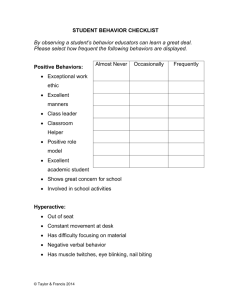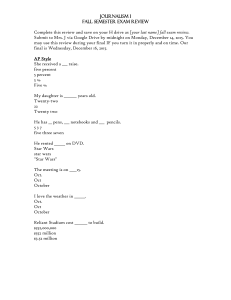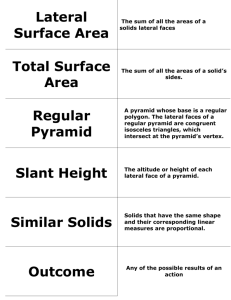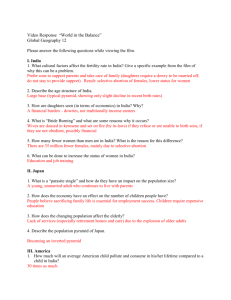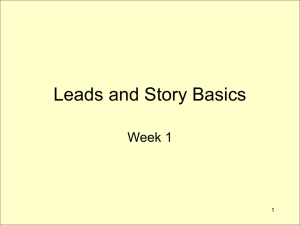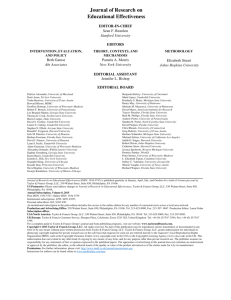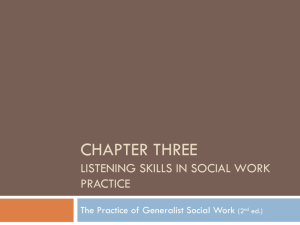Some Useful Ideas for Organizing Lessons
advertisement
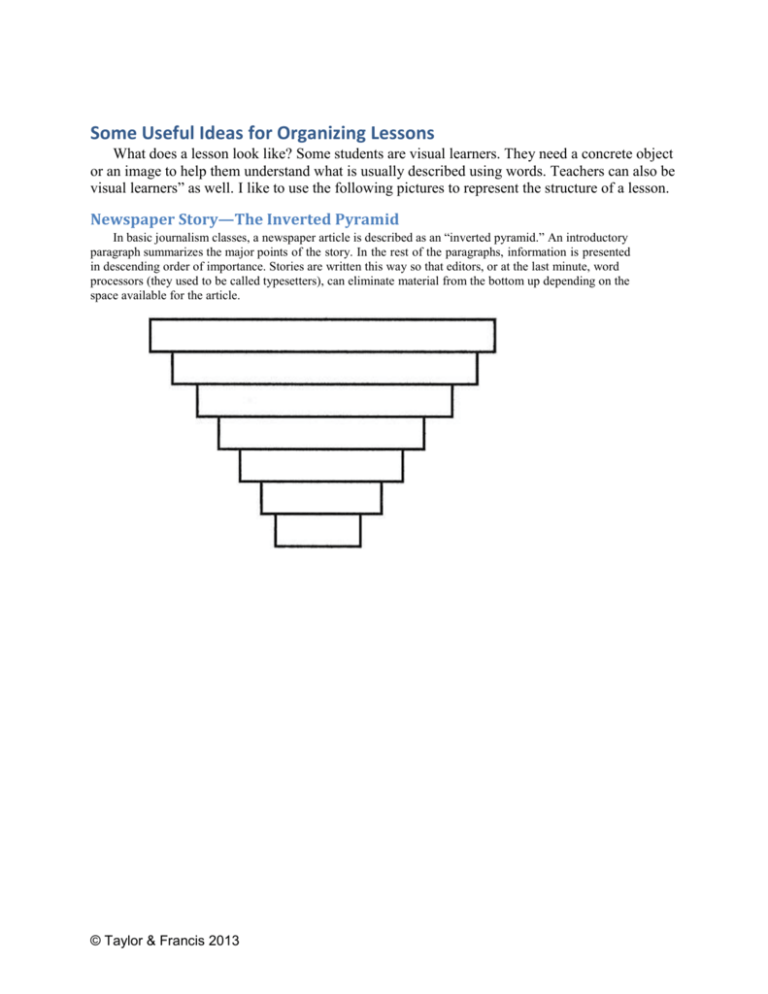
Some Useful Ideas for Organizing Lessons What does a lesson look like? Some students are visual learners. They need a concrete object or an image to help them understand what is usually described using words. Teachers can also be visual learners” as well. I like to use the following pictures to represent the structure of a lesson. Newspaper Story—The Inverted Pyramid In basic journalism classes, a newspaper article is described as an “inverted pyramid.” An introductory paragraph summarizes the major points of the story. In the rest of the paragraphs, information is presented in descending order of importance. Stories are written this way so that editors, or at the last minute, word processors (they used to be called typesetters), can eliminate material from the bottom up depending on the space available for the article. © Taylor & Francis 2013 Regular Lesson Pyramid Try to picture a lesson as a “modified pyramid.” An introductory activity establishes the context for the lesson. The first or primary activities introduce the major points students will be learning. Secondary activities introduce supportive information organized in descending order of importance. If a lesson proceeds quickly, they get included. When time gets tight, these activities can be eliminated from the bottom up. Unlike the inverted pyramid, the summary activity is crucial because it allows students to summarize major points. Wherever you are in the lesson, at the “two-minute warning” you move to your final activity. © Taylor & Francis 2013 Modified Lesson Pyramid No two classes are alike. Life always manages to intervene in the classroom. If you have an early morning class or one just after lunch or gym, students are going to wander in late. If you wait for them to arrive, more of them will just come late, so you have to start teaching at the bell. So that latecomers know what the class is doing, I change the “picture.” Instead of starting the lesson at the beginning, I start in the “middle” with an extended introductory activity using supportive information. When enough students arrive, I swing into the primary activities, establishing the context of the lesson and introducing the major points. Once again we proceed to secondary activities, and at the “two-minute warning,” move to the final activity. © Taylor & Francis 2013 The Perfect “Brain” Storm In the sample streamlined high school social studies lesson plan on the lives and hopes of enslaved Africans in the American South, I suggest having students brainstorm a list of ideas on the front board about ways we can we learn about the ideas and feelings of ordinary people from the past. Many teachers like to begin a lesson by having students “brainstorm” or list what they already know, or think they know. The “K-W-L approach” provides a useful structure for organizing brainstorming. After students list “what we know,” they evaluate the list for missing pieces and contradictory statements, and then construct a new list, “what we want to know.” At the conclusion of a lesson (final activity) or a unit, students return to their initial lists and construct a final list, “what we learned.” © Taylor & Francis 2013
